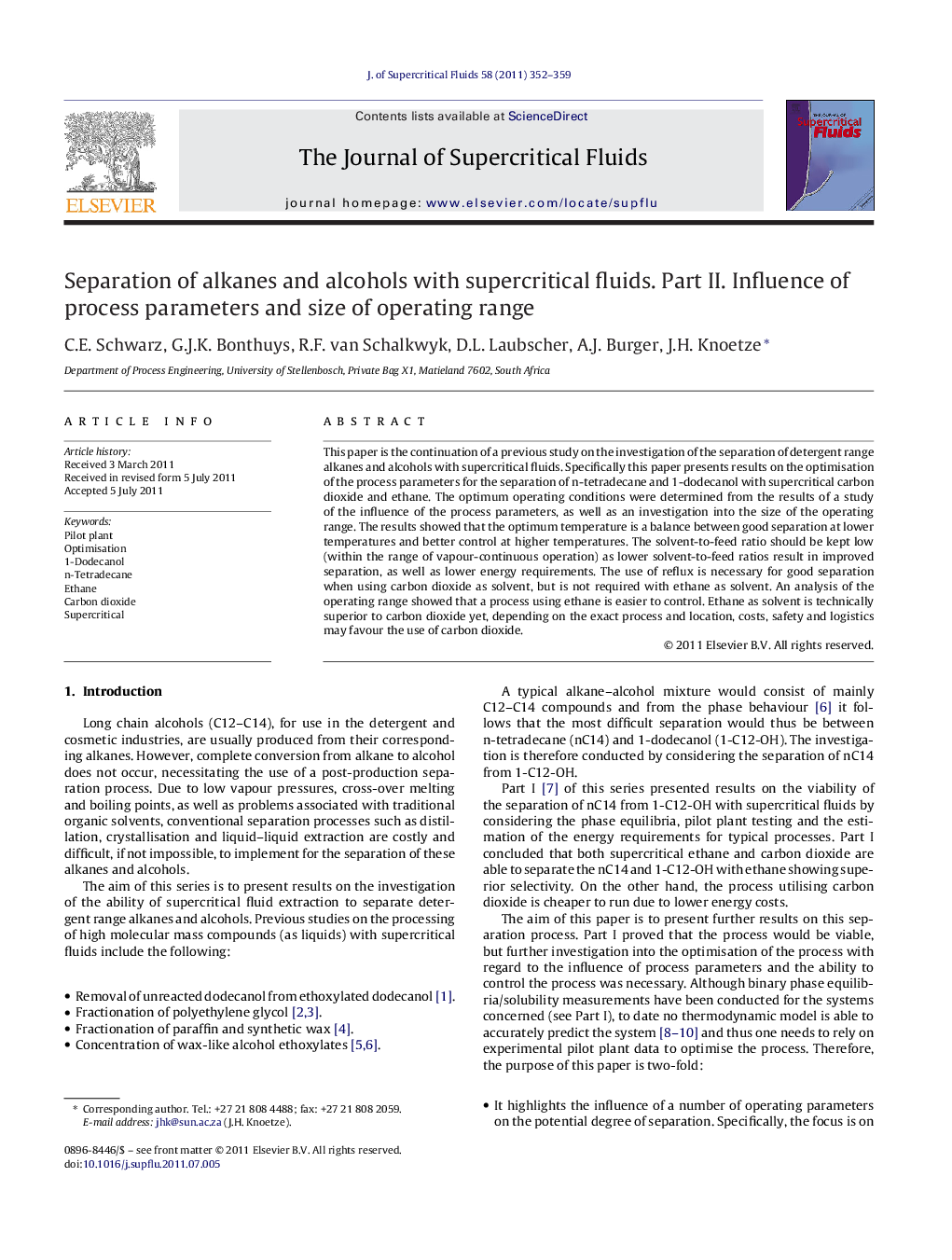| Article ID | Journal | Published Year | Pages | File Type |
|---|---|---|---|---|
| 231365 | The Journal of Supercritical Fluids | 2011 | 8 Pages |
This paper is the continuation of a previous study on the investigation of the separation of detergent range alkanes and alcohols with supercritical fluids. Specifically this paper presents results on the optimisation of the process parameters for the separation of n-tetradecane and 1-dodecanol with supercritical carbon dioxide and ethane. The optimum operating conditions were determined from the results of a study of the influence of the process parameters, as well as an investigation into the size of the operating range. The results showed that the optimum temperature is a balance between good separation at lower temperatures and better control at higher temperatures. The solvent-to-feed ratio should be kept low (within the range of vapour-continuous operation) as lower solvent-to-feed ratios result in improved separation, as well as lower energy requirements. The use of reflux is necessary for good separation when using carbon dioxide as solvent, but is not required with ethane as solvent. An analysis of the operating range showed that a process using ethane is easier to control. Ethane as solvent is technically superior to carbon dioxide yet, depending on the exact process and location, costs, safety and logistics may favour the use of carbon dioxide.
Graphical abstractFigure optionsDownload full-size imageDownload as PowerPoint slideHighlights► Influence of pressure, temperature, solvent-to-feed ratio and reflux on separation. ► Operating range size as function of temperature, pressure and solvent-to-feed ratio. ► Ethane better separation, larger operating range and lower operating pressures. ► Carbon dioxide lower energy and solvent costs.
